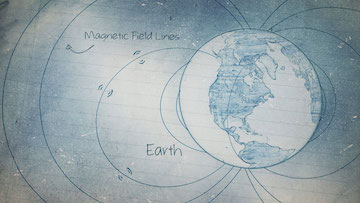440417- Magnetic Ocean.jpg

NASA scientists are developing a new way to use satellite observations of magnetic fields to measure heat stored in the ocean. Credit: NASA
As the ocean tides slosh back and forth, they have several important effects. They help sculpt the coastline, for example, and they cause Earth’s rotation on its axis to slow down. And recent research has shown that the tides create a weak magnetic field. Scientists are using that field to study both the oceans and conditions deep inside our planet.
Because ocean water is salty, it generates an electric current as it moves through Earth’s magnetic field. In turn, that generates a weak level of magnetism in the oceans themselves. It’s tiny compared to the field generated by Earth’s iron core, but over the last decade it’s been measured by several satellites.
The ocean currents also set up a weak magnetic field in the upper layers of the mantle -- the layer of rock below Earth’s crust. Scientists are using measurements of that field to probe conditions down to a depth of about 150 miles below the sea floor. Among other things, that can provide new insights into conditions at the boundary between the crust and mantle. Other scientists say the magnetic field may help them track changes in ocean temperatures.
The oceans absorb heat from the air, which slows the atmosphere’s warming trend. Tracking just where all that heat is going can reveal how the oceans absorb it and distribute it around the world. Changes in water temperature are one of several factors that affect the strength of the oceans’ magnetic field. So tracking changes in our “magnetic” oceans could help us learn more about our changing climate.

